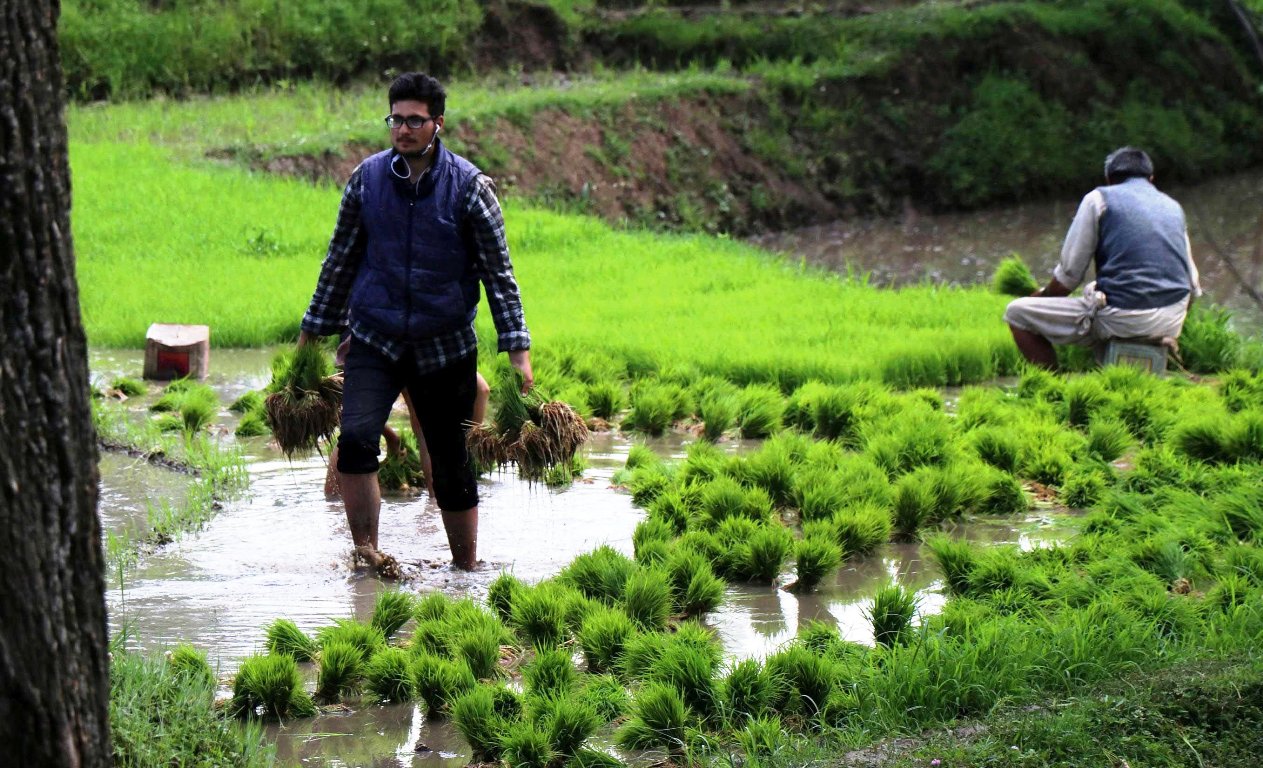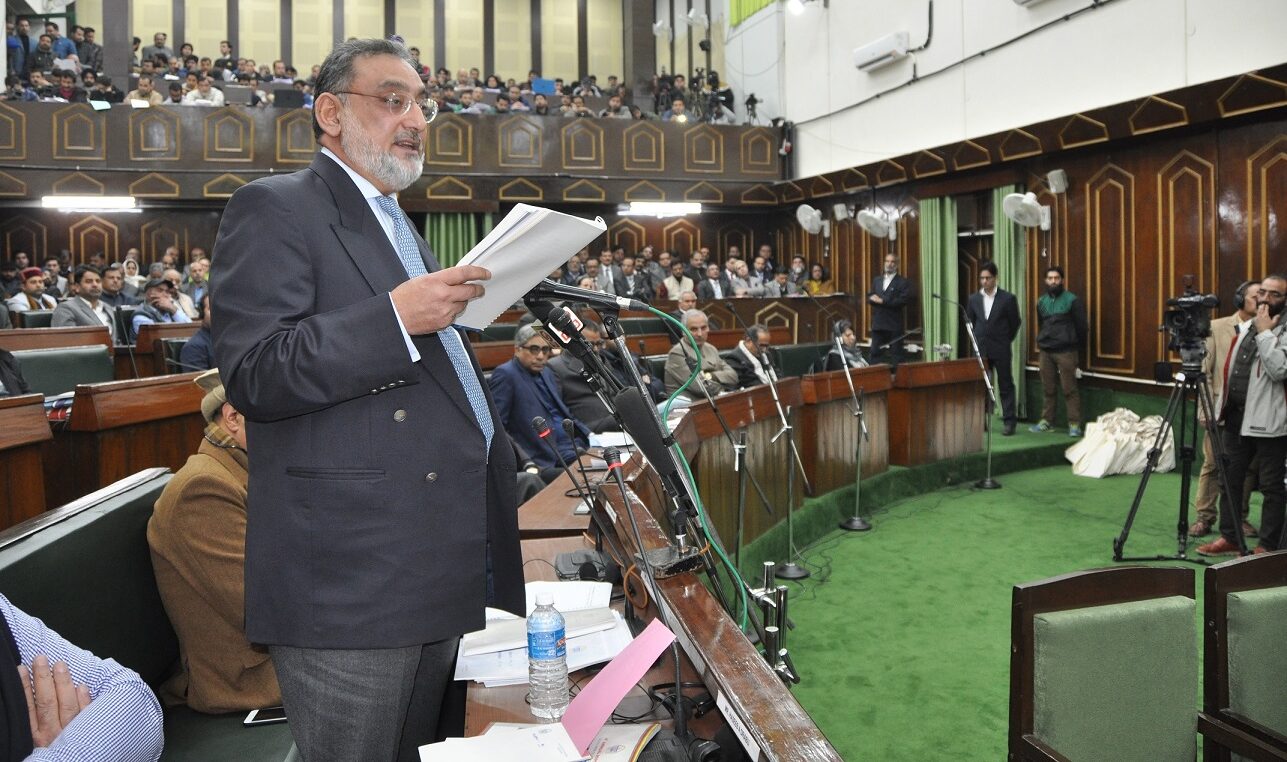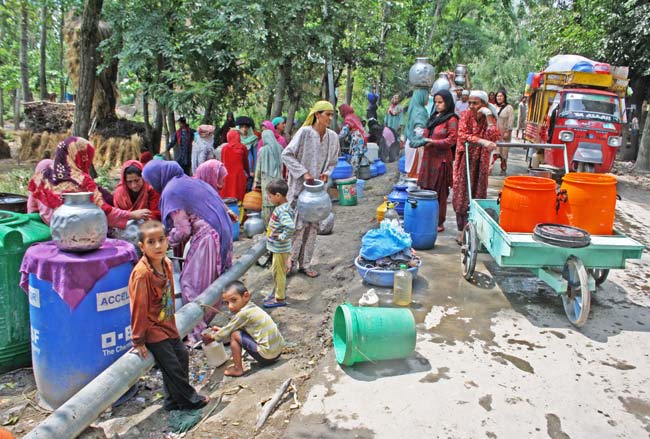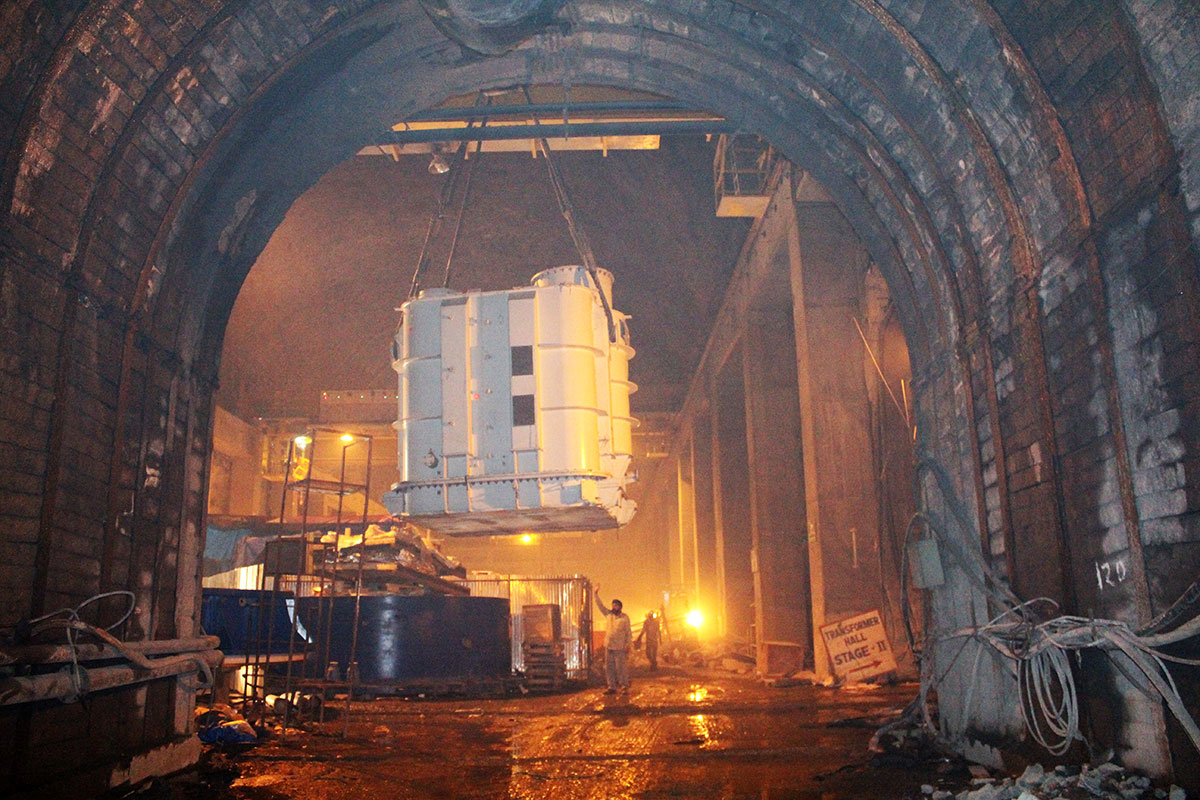In the forward-looking GST regime, the Jammu and Kashmir administration has revived an abolished tax that is expected to be collected for the last seven years. Masood Hussain offers details of the return of an archaic tax that links Kashmir with its over-exploited past

“I propose to abolish Aabiyana,” Dr Haseeb Drabu, Jammu and Kashmir’s state last finance minister, who could deliver a budget before the BJPDP alliance fell under its own weight, said in his budget speech in 2015 summer. “Not only is it archaic and a vestige of feudalism, the collections from this irrigation tax are less than the cost of collection.” He said the abolition will provide relief to all the farmers across the state.
The undoing of the archaic tax had various reasons. During pre-budget meetings when the departments were told to identify the areas which can help in improving the collections for the public kitty, the Irrigation and Flood Control Department (now Jal Shakti) came up with the idea of increasing the irrigation tax. It is a centuries-old tax in which the rulers would seek money from overexploited peasantry for using the water for irrigating their fields. Then, rice was the key resource and Kashmir had thousands of brooks called Khouls that would lift the water from bigger streams for irrigation.
Post-partition, the Irrigation Department would have an impressive human resource deployed to manage the adequate distribution of water to the rice fields. Miraabs’, as these people manning the streams would be called, were a very powerful tribe who would be always in demand. They would sleep at the water-course junctions to prevent nocturnal thefts, which were common.
However, when the Irrigation Department decided to hike the tariff, it triggered a new crisis. People said that most of the land that was growing rice is now growing apple and the orchards require the least water. The consistent disuse had reduced these khouls into stinking cesspools and in most cases, these have been encroached upon. Their argument was that when the peasantry does not require water, unlike past, why should they pay?
The government felt convinced and it was decided that the tax should be abolished. Its collection, the government assessed was lesser than the costs it would entail. On October 15, 2015, Director Finance, PHE, I&FC Department (PW/Hyd/Acctts/BA/2015-16) communicated to Chief Engineer I&FC, Kashmir and Chief Engineer RTIC, Jammu, that Aabiyana is history. In a quick follow-up, the Irrigation Department issued a notification saying that Aabiyana levied from farmers stands abolished from 2015-16 but outstanding Aabiyana up to March 31, 2015, will have be realised.

(Image: DIPR)
A Restructuring Process
The abolishing of Aabiyana was in continuation with the restructuring of the public finance architecture that Drabu presided over since 2002, when he drafted the first Vote on Account, insisting Jammu and Kashmir was living in “financial sin” for a long time. It was in the very first budget of the then PDP-Congress coalition that Jammu and Kashmir lost the dubious distinction of being the only place on earth where the local government was taxing its own produce under a toll tax regime. All the ‘exports’ diverted to the markets in the plains – mostly the apple, were being taxed within the territory of Jammu and Kashmir, unlike the neighbouring states. The abolishing of this tax was a major shift in Jammu and Kashmir’s forward-looking public finance set-up.
Subsequently, the government abolished the Malliyana, the land revenue tax. The government’s own assessment suggested that it was spending more money on the collection of a small amount thus making the exercise a punishment for the system and the people. The other factor for this undoing was that the government’s decision to convert the traditional land revenue systems into a robust digital system would hugely reduce the cost of record-keeping. The process has already started and most of the revenue records have already been assembled on the digital system.
In the subsequent years, when Drabu joined the politics formally and became the finance minister, many other initiatives started that were aimed at using IT in resource transfer and making the budget a transparent process with clear landmarks of various stages. Then Drabu, the architect of the BJPDP alliance was sacked and the government fell within a few months. This marked the undoing of almost everything that had been done.
Not Implemented?
The undoing of Aabiyana order, however, had started when Drabu was still in office.
Within days after the budget, the Irrigation Department directed its district officers to collect Aabiyana with a 15 per cent increase as was collected previously. Since the Irrigation Ministry was managed by the BJP, it was seen as a crisis within the ‘north pole-south pole’ alliance. Whether or not it was collected, is not known.

The irrigation tax came back in news on August 11, 2020, when a public notice was issued by the Chief Engineer Irrigation & Flood Control saying that the 2015 abolition order “has no legal standing”. It was the State Water Resources Regulatory Authority (SWRRA) alone than can take any such decision, it said. The notice asked the peasantry to pay the Aabiyana dues from 2015 till date failing which “under section 92 of Jammu and Kashmir Water Resources Regulation and Management Act 2010, action will be taken against the defaulters.” The notice was a follow-up to the SWRRA communication (JKSWRRA/2019/T- 44/647-53 Dated: February 8, 2019) insisting that Aabiyana may be levied as per the standard procedure of J&K SWRRA and the authority has not dispensed with the levy of these charges.
A Regulator
Jammu and Kashmir Water Resources Regulatory Authority (JKWRRA) is an interesting institution. The outcome of Congress minister Taj Mahiuddin’s short-sighted approach, it is a body that has the right of imposing water usage charges on the water users. This institution – once of its kind, was the outcome of the fierce public debate that India’s major hydropower giant, the NHOC has been exploiting the water resources of Jammu and Kashmir without paying anything to the state beyond the 12 per cent royalty. It came into being on November 10, 2010.
The law governing the JKSWRRA consolidated all the laws relating to the use of water, measurement, construction, control and management of works with respect to water storage, conservation and protection, irrigation, water supply, flood control and prevention, improvement in the flow of water, protection and improvement in the physical integrity of water courses, lakes and springs, and safety and surveillance of dams etc. The newly created institution, peculiar to Jammu and Kashmir, gave it the responsibility of regulating water resources within Jammu and Kashmir.
There were people who shouted against the idea within the NC-Congress coalition insisting that the cess it will impose on the power-generating institutions will eventually make the energy expensive for the consumers. For political reasons, nobody paid any heed to it. While the power generating institutions have been paying the water usage charges, off late, they have been linking the feasibility of all the new projects to water usage charges and getting it waived off at the outset. At the same time, they have been genuinely adding the water usage charges as part of their costs, and the CERC has been admitting it, thus increasing the per unit electricity costs.
With this, the creation of the SWRRA has eventually made no difference other than making the power costly. In the post-2019 era, the central government retained this law and the authority survived and is now asserting its authority within the ambit of the law.
Status Quo Ante
With JKSWRRA – currently headed by GS Jha with A Paramesham and Kishore Chandra Naik as members – asserting its authority, the much-maligned tax is back in the news as the Finance Department has asked the Irrigation Department to collect Abiyana for the last seven years. There has been a meeting in the finance department on June 1, 2022, in which the issue was discussed and the decision was conveyed on June 14, 2022, by the department to Jal Shakti saying that the (Irrigation) Department has continued to collect Abiyana during these years. “Waiving off the Abiyana retrospectively w.e.f 2015-16 will create complications and accounting issues,” it said. “It was therefore decided that Abiyana shall continue to be realized and shall not be waived off.”

“I am as such directed to request you kindly take further necessary action in the matter as per the direction of the Finance Department,” Director Finance at Jal Shakti Department (JSD-Acc/03/3/2021-Acctts-PHE, I&FC) conveyed to Chief Engineers on June 22. Why the tax was not collected for all these years, the department officials say that it was “due to lack of clarity”.

